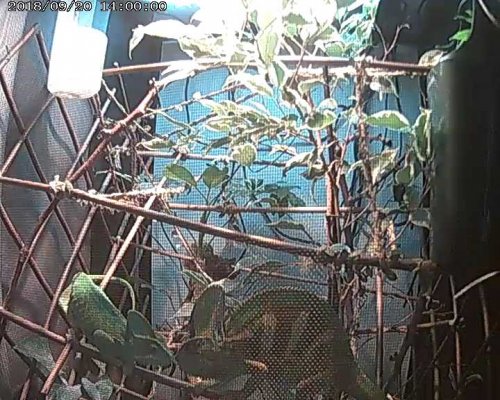My female appears receptive and keeps "presenting" herself to the male, walking underneath him, hovering in front of of him but he's showing zero interest in her. I have tried putting her in his enclosure and putting him in her enclosure to no avail.
She's the one chasing him around the enclosure, shouldn't it be the other way around?
She hasn't been aggressive towards him at all.
She's the one chasing him around the enclosure, shouldn't it be the other way around?
She hasn't been aggressive towards him at all.






